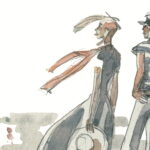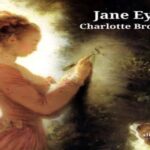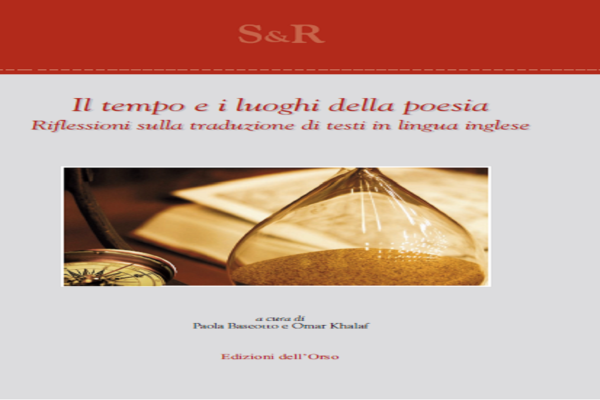The fact that J.K. Rowling, the famous literary mother of the wizard Harry Potter saga, has been inspired by real or mythological characters is undeniable.
The three-headed dog that appears in Harry Potter and the Philosopher’s Stone Cerberus, is a mythological animal and can be also found in Dante Alighieri’s Divina Commedia
And, of course, the philosopher’s stone itself is not an invention of the English writer, but a legendary artifact. For alchemists, it would be able to give immortality or to turn metals into gold. Whereas the French alchemist Nicolas Flamel actually existed.
Is it possible that further elements would not appear for the first time in the famous saga, but in other pieces of literature and poetry, maybe also within the Italian or German literary tradition?
The first edition of Fiabe novelle e racconti dates back to 1857, as stated in the preface of the collection
Fabe siciliane – From the collection of Giuseppe Pitrè (Di Girolamo Editore 2013) edited by Amelia Crisantino. Each story is told or collected by a different person and Pitrè has limited himself to transcribe it, in order to pass it on to future generations. The cloak of invisibility appears in the fairytale “The enchanted bag, mantle and horn”, collected in Acireale by Salvatore Pasquale Vigo. This story tells about a father who, before dying, leaves a brick to each of his three sons.
Under each brick there is a surprise
A very small bag from which money comes out, a cloak that makes invisible and a horn from which soldiers come out if you blow inside. At this point it is easy to connect with Harry Potter and the Deathly Hallows by J.K. Rowling, who reports The Tale of the Three Brothers in the last volume of the saga.
Each of them receives a gift from Death in person: the elder wand, the stone that somehow brings people back to life and the cloak of invisibility. The complete story is reported in the volume The Tales of Beedle the Bard. For the rest, the two stories take place in a completely different way. Going into detail, it is possible to discover the differences between the two tales, which only have in common the presence of the three brothers and the cloak of invisibility.
The book Fiabe siciliane contains the story The Enchanted Bag, Cape and Horn
A father had three sons, three bad guys. He sold his own house, keeping only three bricks for himself. When he was about to die he made a will, leaving each son a brick. The eldest brother found a small bag under his brick: he touched it, asked for two coins for some bread and found them inside. So he became rich, but revealed his secret to the queen he had fallen in love with, that he had promised to marry him once he knew his secret. She stole his bag instead.
Then, the eldest brother asked the middle brother, who had become rich too, for a help. Under his brick he had found “a cape” which, once worn, made invisible. So he had made money by stealing. The eldest brother asked him to borrow the cape and, once he became rich again, returned to the queen. She made him the same promise again, then stole the cloak that made invisible without marrying him. So the eldest brother went to the youngest brother, who had found a horn under his brick. If the horn was played, an army of soldiers would come out.
So the third son had become rich by doing wars.
The eldest brother became rich by using the horn and came back again to the queen. And again the queen made him reveal the secret of his wealth, stealing his horn.
The young man then attempted suicide jumping from a cliff, but falling on a black fig tree. He ate some fruits and a lot of horns came out. Then he jumped again and fell on a white fig tree. He ate some other fruits and the horns disappeared. So he climbed the precipice and brought the black figs to the royal palace, pretending to be a farmer.
The result was that the whole royal family found themselves full of horns. Pretending to be a doctor, the eldest brother gave the white figs to eat to the royals. As a reward, he asked the queen to have again his three charmed objects. She said yes, but on condition to marry him.
There is an English version of the fairytales collected by Pitrè: The Collected Sicilian Folk and Fairy Tales of Giuseppe Pitrè
divided into two volumes, but published in 2009 by Routledge. Whereas “Harry Potter and the Deathly Hallows” was conceived in the early 1990s and published in 2007. It would be interesting to know if Rowling could have had access to a previous translation or had come to know the story in any way. Obviously there is absolutely no talking of plagiarism, even because the two stories above are completely different from each other.
The Tale of the Three Brothers by J.K. Rowling
It tells the story of three brothers who had to cross a river. Since they were able in magical arts, they made a bridge appear avoiding to drown. It was at that point that Death, unhappy to have been mocked, appeared and put on a good face, congratulating the brothers. It offered them a gift each.
The eldest brother was a warlike guy and asked for the most powerful wand in the world. So he received one made of elder.
As for the middle brother, who was an arrogant, wanted to be able to resurrect the dead. He got a magical stone.
The youngest brother, who was the wisest and the humblest of the three, only asked to leave without being seen. He received the cloak of invisibility.
Here are the three Deathly Hallows: the Elder Wand, the Resurrection Stone and the Cloak of Invisibility.
The three brothers then took different paths. The eldest one was cut off his throat to steal his wand. The second brother brought the woman he loved back to life, but those who came back from death did not really come back. Made mad by desire, he killed himself to reach her. Whereas the youngest brother became very old. It was a long time since death was looking for him, when he finally decided to join his old friend. When he reached a venerable age, he took off his cloak and gave it to his son.
But there is also another possibility
The writer may have learned of the invisibility cloak from the Nibelungenlied, The Song of the Nibelungs in English. It is an epic poem written in middle high German by an anonymous author and dating back to the first half of the XIII century. The story tells of King Gunther, who had to fight against Brunilde.
He could have married her only in case of victory. But she was very strong. So Gunther asked Siegfried for a help and he fought at his side hidden by the magic cloak that made him invisible. Siegfried offered him the same help when Brunilde, now Gunther’s wife, refused to sleep with him. Thus Brunilde lost her legendary strength.
These are, of course, only hypotheses. Maybe J.K. Rowling was inspired by Sicilian fairytales, by ancient German literature or perhaps the cloak of invisibility is simply the result of the great imagination of the English writer. Nothing is taken away from the literary value of his novels, which will remain in the history of world literature.
Articolo di
Elisa Sartarelli









